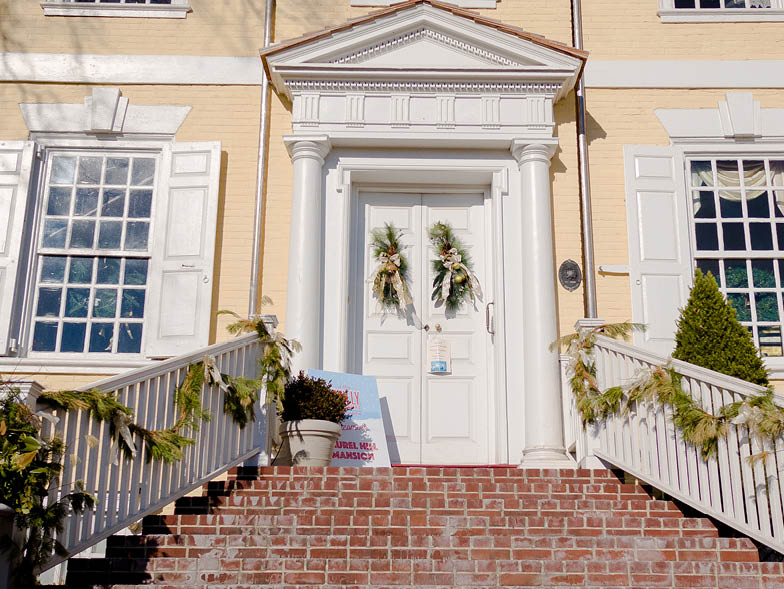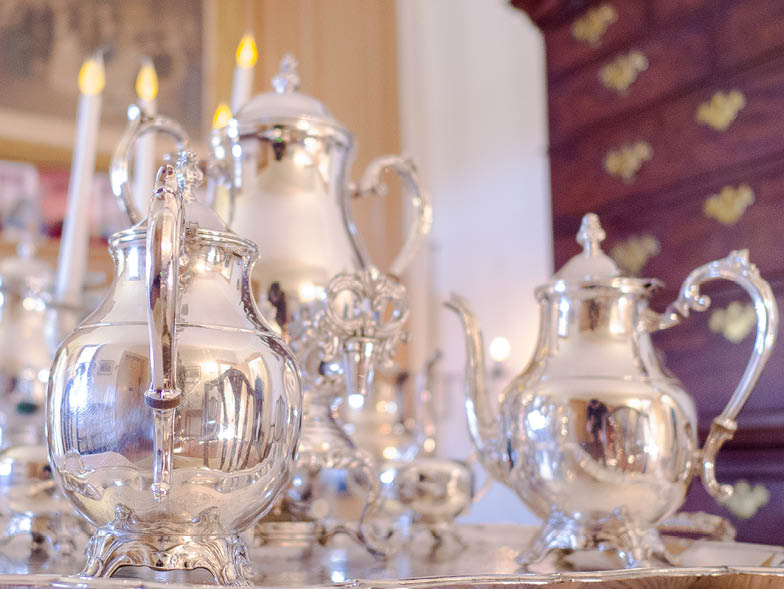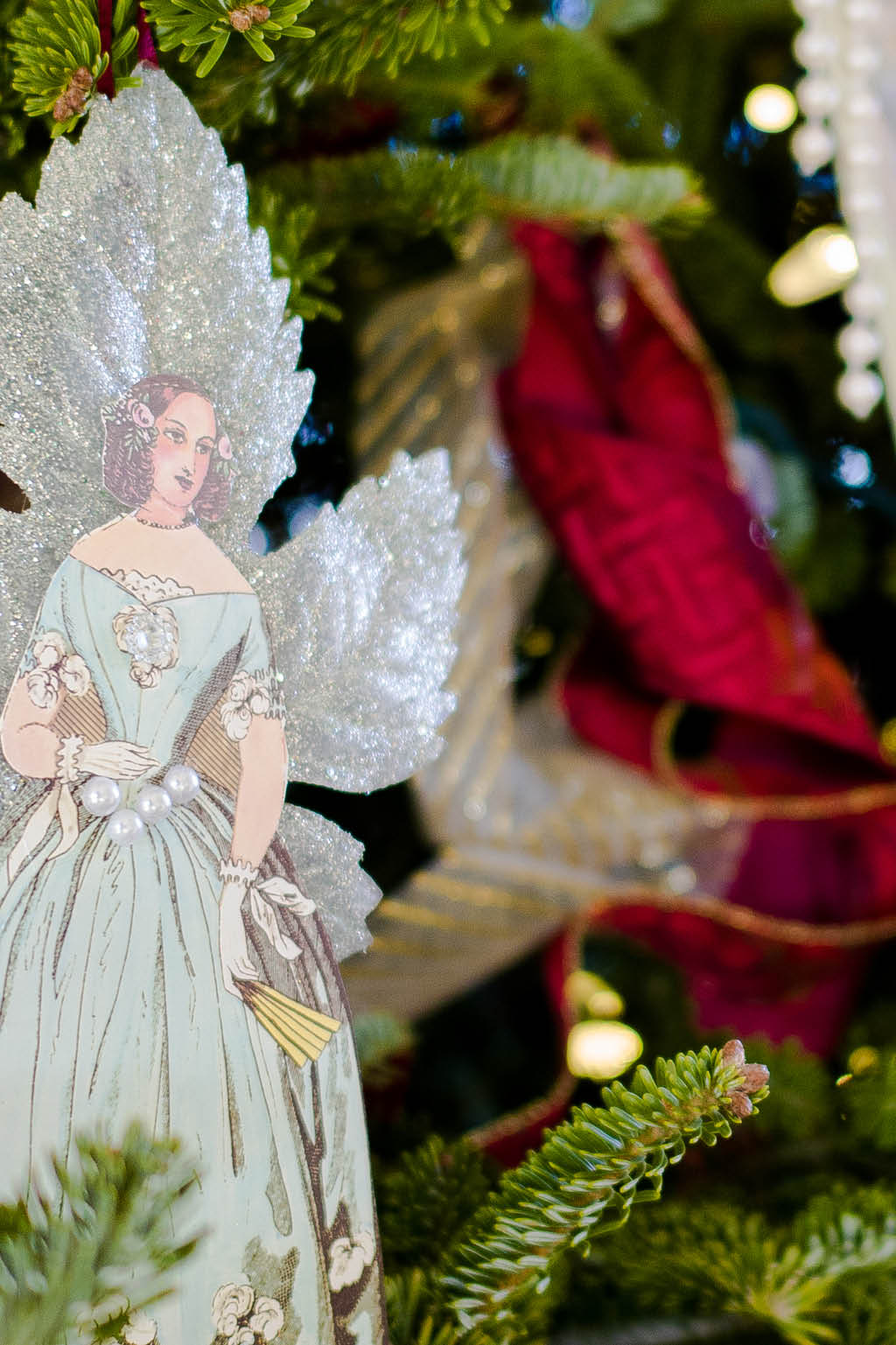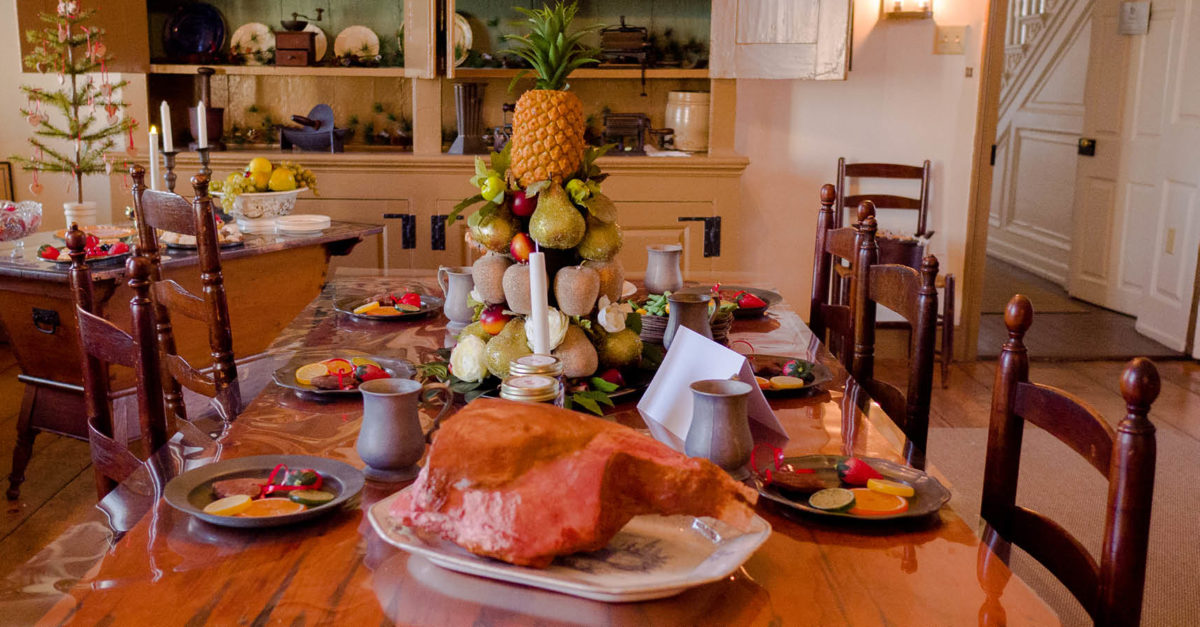Homes for the Holiday
Philadelphia’s Fairmount Park is the largest landscaped urban park system in the world. From the steps of the art museum to the banks of the Schuylkill River, the park spans about 10,000 acres across the city. Several houses, or villas, are the jewels in the park’s crown. Built in the 1700s and 1800s by affluent Philadelphians as summer retreats from the city’s heat, today they are popular year-round destinations—especially during the holidays.
For almost a half century, the mansions have been festively decorated for a seasonal event now dubbed A Very Philly Christmas. Open through December 31, the homes are a holiday must-see in the city.

Among these jewels is Lemon Hill, not far from the iconic Philadelphia Museum of Art and Boathouse Row. Philadelphia merchant Henry Pratt built this stately summer villa in 1800 on property formerly owned by Revolutionary War financier Robert Morris, who eventually went bankrupt and lost his property.
Pratt had the villa designed in the neoclassical style. It features graceful oval rooms with carved doors and fireplaces on each of its three floors and is named for the lemon trees that Pratt grew in his greenhouses. Although the greenhouses no longer exist, the lemon trees do and were decorated for the 2017 holidays; they were just one of many types of Christmas trees found in the mansion, including a grand tree decorated in gold ornaments. Lemon Hill also featured
a child-sized ice sculpture reindeer in 2017, resting by a sleigh.
Drive a few miles north and you’ll reach Laurel Hill Mansion. A widow named Rebecca Rawle inherited the property in 1761 and later married Loyalist and Philadelphia mayor Samuel Shoemaker; they built the villa later in the 1760s in the Middle Georgian style. When Rebecca died in 1819, she left the house to her son, attorney William Rawle. In 1783, he had established his own law firm, which later became Rawle & Henderson. The practice was passed down through the family, and it’s now the oldest continually practicing law firm in the United States.

Laurel Hill features an unusual octagonal music room, which was added during the early nineteenth century. The villa still retains the pianoforte by John Broadwood & Sons, London, 1808, and an antique harp. Today, the villa is maintained by the Women for Greater Philadelphia. In 2017, they decorated the handsome house in a women’s fashion theme. The house also featured a giant tree, which was grandly adorned with a large collection of satin hearts and a collection of antique dolls at the foot of the tree, including an original Raggedy Ann doll that’s owned by one of the members.
Less than a mile away from Laurel Hill is Woodford Mansion, where snowman-shaped topiaries greeted you at the door in 2017. In 1756, Judge William Coleman purchased twelve acres of land and built a one-and-a-half-story symmetrical brick Georgian house. It has center hallways, two bedrooms, and a basement kitchen, but perhaps Coleman’s best legacy to Woodford is the beautiful parlor with its covered ceiling and exquisite carved wooden chimneypiece. This room was decorated in white, gold, and red for the 2017 holiday event, with greenery abounding—including a lovely, fully decorated Christmas tree.
Starting in 1771, the new owner, David Franks, expanded the house, adding a second floor with a Palladian window above the front door. That created a grand new stair hall leading upstairs to a cheery ballroom and new bedrooms. The original ground floor—which is open for touring during the holidays—was left largely intact, and its Georgian drawing room has survived unchanged from Coleman’s day.

A National Historic Landmark in recognition of its architectural and historical significance, Woodford also exhibits the extraordinary Naomi Wood Collection of antiques. Among the treasured items are Federal objects of the 1790–1810 period, including a mahogany shelf clock and an American liquor chest-on-frame. Four of the side chairs were sold by Philadelphia cabinetmaker Jacob Wayne in 1796, for which the bill of sale still survives.
The grand Historic Strawberry Mansion, within walking distance of Woodford, is situated on thirteen acres. It was constructed circa 1790 in early American Federal style by the renowned lawyer Judge William Lewis, who drafted the first law abolishing slavery in the United States. Lewis called this home Summerville.
Judge Joseph Hemphill, who bought Strawberry Mansion in 1821, added the elaborate Greek revival wings during the 1820s. The mansion also features an important doll collection, porcelain pieces, and other early American artifacts. For A Very Philly Christmas 2017, the mansion was decked in white and gold (particularly the ballroom), and its dining room was set for a traditional holiday dinner, complete with elaborate centerpieces and food.
To complete your tour of the Fairmount Park holiday houses, cross the Schuylkill River, and then head south to Cedar Grove, which is conveniently located near the Philadelphia Zoo and the Please Touch Museum.
Built in 1748 by Elizabeth Coates Paschall, a wealthy Quaker widow, for herself and her three children, it originally was a modest farmhouse.

Two generations later, at the end of the eighteenth century, Elizabeth’s granddaughter and her husband more than doubled the size of the house, adding a gambrel roof and a large lunette window in the new gable. By 1848, the next generation of the family had added the piazza, wrapping it around both sides of the stone house; all the downstairs rooms give access to it.
The house features a two-sided wall of closets, as well as many of the original furnishings and objects. Cedar Grove depicts the simplicity of life in the 1800s, as the house’s architecture reflects the family’s Quaker origins. Originally located in the Frankford section of Philadelphia, this house was moved, stone by stone, to Fairmount Park in 1926, when its reconstruction was completed. The house was last fully restored by the city in time for bicentennial celebration in 1976.
In 2017, Cedar Grove was decorated for the holidays as it may have been in the early twentieth century by John and Lydia T. Morris, the last generation of Morrises to live in the house.
Showcasing a colonial revival aesthetic, wreaths and topiaries, adorned with cloved oranges (called pomanders), lemons, apples, and pineapple, were beautifully displayed throughout the house.
An afternoon at the historic houses of Fairmount Park offers something for everyone during the holidays and, depending on when you visit, you may even enjoy musical performances, entertainment, or food tastings in these iconic homes—so be sure to plan ahead. Parking is free at the mansions, and shuttle service is available for even more convenience. No matter how you arrive, though, these Philadelphia landmarks will add a special charm to your season.
For more information about A Very Philly Christmas, visit holidaysinthepark.com.
For information about the historic houses, visit parkcharms.com.






















